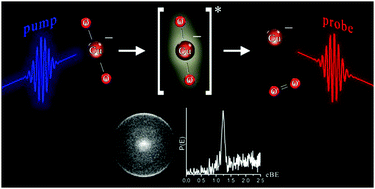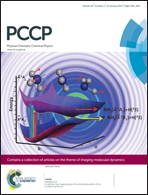Photodetachment and photodissociation of the linear OCuO− molecular anion: energy and time dependence of Cu− production
Abstract
A photodissociative study of CuO2− is presented using a combination of energy and time domain photoelectron spectroscopy. Ion source conditions are used that solely produce linear OCuO−. Photodissociation of this isomer to produce Cu− + O2 is conclusively demonstrated at wavelengths between 765 and 340 nm. Nanosecond pulsed photoexcitation at wavelengths shorter than 340 nm produces single photon detachment transitions from the first excited state of CuO2−. At longer wavelengths narrow Cu− fragment transitions are observed as a result of a sequential two photon process. In addition, the longer wavelengths produce a weak, broad two photon dependent signal, the result of detachment of the dissociating linear isomer. Time resolved pump–probe measurements reveal a long timescale growth (up to 150 ps) of the Cu− fragment yield, consistent with the unfavorable starting geometry for the dissociative process and indicating a potential energy surface which has one or more substantial barriers to dissociation.

- This article is part of the themed collection: Imaging molecular dynamics

 Please wait while we load your content...
Please wait while we load your content...